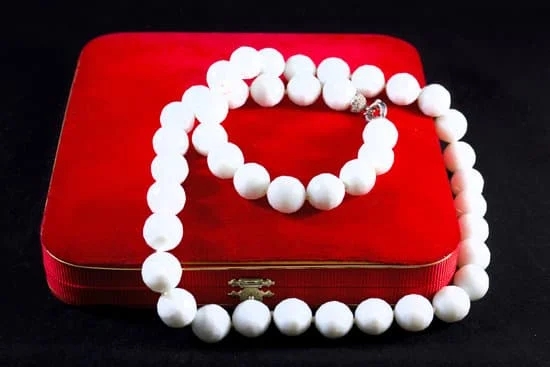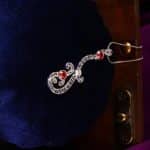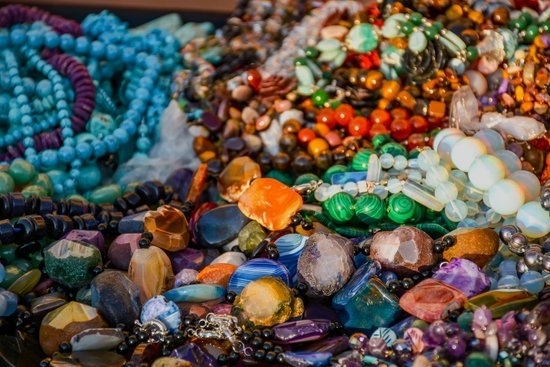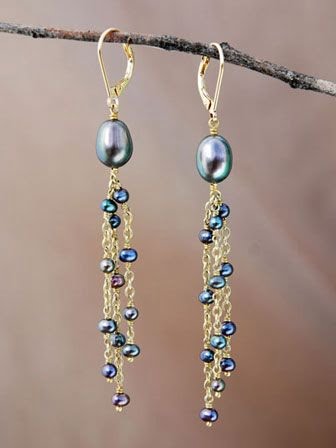Are you wondering how to paint a line on a circular bead jewelry to add a unique touch to your accessories? Painting a line on circular beads can elevate the design and give your jewelry a personalized look. Whether you are looking to create intricate designs or simply add a pop of color, painting lines on circular bead jewelry can help you achieve the desired aesthetic.
By painting lines on circular bead jewelry, you have the opportunity to customize your accessories and make them truly one-of-a-kind. Adding a painted line can enhance the overall design of your jewelry piece, allowing you to showcase your creativity and style. Whether you prefer bold and vibrant colors or subtle and elegant accents, painting lines on circular bead jewelry offers endless possibilities for customization.
In this article, we will explore the step-by-step process of painting a line on circular bead jewelry, from preparing the beads to choosing the right paint and applying various painting techniques. By following these guidelines, you can create stunning and unique pieces of jewelry that reflect your personal style and creativity. So gather your materials and get ready to unleash your artistic side as we delve into the world of painting lines on circular bead jewelry.
Materials Needed
When it comes to painting a line on circular bead jewelry, having the right materials is essential to achieving a professional and polished look. Here is a list of specific tools and supplies you will need to successfully paint a line on your beads:
- Paint: Choose a high-quality paint that adheres well to the surface of the beads. Acrylic paints work great for most bead materials, while enamel paints provide a glossy finish. Metallic paints can add a touch of elegance to your design.
- Brushes: Invest in fine-tipped brushes for precision painting. Make sure to have different brush sizes on hand to accommodate varying bead sizes and line thickness.
- Beads: Select circular beads in the size, shape, and material of your choice. Ensure that the beads are clean and free of any dirt or debris before painting.
- Surface: Use a flat and stable surface to work on, such as a tray covered with wax paper or parchment paper. This will prevent the beads from rolling around while you paint.
Properly preparing these materials before starting the painting process will make it easier and more enjoyable for you. By having everything laid out and organized, you can focus on creating beautiful designs without any interruptions.
Whether you are an experienced jewelry maker or just starting out, having the right materials at your disposal is crucial in achieving the desired results when painting a line on circular bead jewelry. Investing in quality paints, brushes, beads, and surfaces will ensure that your creations stand out and showcase your artistic talents effectively. Now that you have your materials ready, let’s move on to the next step: preparing the beads for painting.
Remember, creativity knows no bounds when it comes to jewelry making, so don’t be afraid to experiment with different colors, patterns, and techniques as you paint lines on your circular bead jewelry. With practice and patience, you’ll soon master the art of adding personalized touches to your designs that reflect your unique style and vision.
By following these guidelines and using the recommended tools and supplies listed above, you’ll be well-equipped to paint stunning lines on circular bead jewelry that are sure to catch everyone’s eye. So gather your materials and get ready to unleash your creativity onto those beads.
Preparing the Beads
When it comes to painting a line on circular bead jewelry, preparation is key to achieving a flawless result. Before you start painting, it is essential to clean and prep the circular beads properly to ensure a smooth and even application of the line. Here are some step-by-step instructions on how to prepare the beads for painting:
Cleaning the Beads
The first step in preparing the beads for painting is to clean them thoroughly. Use a mild soap and water solution to remove any dirt, dust, or debris from the surface of the beads. Gently scrub each bead with a soft brush or cloth to ensure that they are clean and free of any residue that could affect the paint’s adhesion.
Sanding the Beads
Once the beads are clean and dry, you may need to sand them lightly to create a smooth surface for painting. Use a fine-grit sandpaper or emery board to gently sand each bead, paying attention to any rough spots or imperfections that could hinder the paint’s application. Be sure to wipe away any dust from sanding before proceeding with painting.
Priming the Beads
To help the paint adhere properly and prevent chipping or peeling, consider priming the beads before painting. Apply a thin layer of primer specifically designed for use on jewelry surfaces and let it dry completely before moving on to painting. This will create a base for the paint to cling onto and ensure a long-lasting finish on your circular bead jewelry.
By following these step-by-step instructions on cleaning, sanding, and priming your circular beads before painting, you can ensure that the painted line will adhere smoothly and evenly, resulting in a professional-looking finish on your custom jewelry pieces.
Choosing the Right Paint
When it comes to painting a line on circular bead jewelry, selecting the right type of paint is crucial for achieving the desired look and ensuring longevity. There are several options to consider, including acrylic, enamel, and metallic paints, each with its own unique properties.
Acrylic paint is versatile, easy to use, and available in a wide range of colors, making it ideal for beginners and experienced crafters alike. It dries quickly and can be easily mixed to create custom shades for a personalized touch.
Enamel paint is another popular choice for painting beads due to its durability and glossy finish. It provides a smooth and vibrant color application that is long-lasting even with regular wear.
Metallic paints add a touch of shimmer and elegance to bead jewelry, perfect for creating eye-catching designs or adding accents to existing pieces. Whether you prefer a matte or glossy finish, metallic paints come in various shades like gold, silver, bronze, and copper that can elevate the overall look of your jewelry.
When choosing the right paint for your circular bead jewelry project, consider the design aesthetic you want to achieve and how it complements the overall style of the piece. Opt for colors that enhance the beads’ natural beauty or create contrast with different hues for a striking effect. Experiment with different paint types and finishes to discover which works best for your specific project before moving on to the next steps in painting a line on your beads.
| Paint Type | Properties |
|---|---|
| Acrylic Paint | Versatile, easy to use, quick-drying |
| Enamel Paint | Durable, glossy finish |
| Metallic Paint | Shimmering effect, variety of shades available |
Painting Techniques
Using a Fine-Tipped Brush
One of the most common and versatile techniques for painting a line on circular bead jewelry is using a fine-tipped brush. To start, ensure that the brush is clean and in good condition to prevent any unwanted smudges or streaks. Dip the brush into the paint of your choice, making sure to remove any excess paint by lightly tapping it on the edge of the container.
With a steady hand, carefully paint a straight line along the surface of the bead. Start from one end and work your way towards the other, trying to maintain an even thickness throughout. If you make any mistakes or need to correct a wobbly line, gently wipe off the excess paint with a damp cloth before it dries completely.
Using Masking Tape for Straight Lines
For those who prefer precise and crisp lines on their circular bead jewelry, masking tape can be a handy tool. Cut a piece of masking tape to the desired length and stick it onto the bead, ensuring that it is straight and securely attached. Press down firmly on the edges to prevent any seepage of paint under the tape.
Using a fine-tipped brush or even an airbrush, apply the paint over the exposed area of the bead without touching the tape. Once you have painted over the entire section, carefully peel off the masking tape to reveal a clean and sharp line underneath. This method is great for creating geometric patterns or color-blocking designs on your jewelry pieces.
Using Stencils for Intricate Designs
If you want to add intricate designs or patterns to your circular bead jewelry, stencils can be an excellent tool to achieve precision and consistency. Choose a stencil that fits comfortably around the circumference of your bead and secure it in place with adhesive or tape. Make sure there are no gaps between the stencil and the bead surface to avoid bleeding of paint.
Using a sponge or stippling brush, dab small amounts of paint onto the exposed areas of the stencil. Be careful not to apply too much pressure or paint at once to prevent smudging or blurring of details. Once you have covered all desired sections with paint, gently lift off the stencil to reveal your beautifully painted design on your circular bead jewelry piece.
Drying and Curing
Painting a line on circular bead jewelry can add a unique and personalized touch to your creations. However, in order to ensure that the painted line stays vibrant and does not smudge or fade, it is crucial to allow the beads to dry thoroughly and cure properly. This process requires patience and attention to detail to achieve the best results.
After painting the line on your circular bead jewelry, set aside ample time for the beads to dry completely. The drying time will vary depending on the type of paint used, so be sure to refer to the manufacturer’s instructions for guidance. Placing the painted beads in a well-ventilated area can help expedite the drying process, but avoid direct sunlight or excessive heat as it may cause the paint to crack or fade.
Once the beads are fully dried, it is important to allow them to cure properly. Curing involves letting the paint fully adhere and harden onto the surface of the bead, ensuring long-lasting durability. Depending on the type of paint used, curing times may range from a few hours to several days. Be patient during this step, as rushing through the curing process may result in smudges or imperfections on the painted line.
In order to prevent smudging or fading of the painted line on your circular bead jewelry, handle the beads with care during and after the drying and curing process. Avoid rubbing or scratching the painted surface until it has fully cured.
Additionally, store your finished jewelry pieces in a safe place where they won’t be jostled or exposed to harsh conditions that could damage the paint. By following these guidelines for drying and curing your painted beads, you can ensure that your circular bead jewelry remains beautiful and vibrant for years to come.
| Drying Process | Curing Process |
|---|---|
| Allow ample time for beads to dry completely | Let paint fully adhere and harden onto surface |
| Place in well-ventilated area | Depending on type of paint, times may vary |
Adding Finishing Touches
Now that you have successfully painted a line on your circular bead jewelry, it’s time to take it to the next level by adding finishing touches. Enhancing the painted line with extra details can make your jewelry stand out and give it a polished look. Here are some suggestions on how to elevate your design:
- Glitter: For a touch of sparkle and glamour, consider adding glitter to the painted line on your bead jewelry. You can either mix glitter with clear coat or apply it directly over the painted line for a dazzling effect.
- Varnish: To protect the painted line from wear and tear, applying a layer of varnish is highly recommended. Varnish not only provides durability but also adds a glossy finish to your jewelry piece.
- Clear Coat: Another option for enhancing the longevity of the painted line is to seal it with a clear coat. This transparent protective layer will prevent chipping, fading, and scratches, keeping your bead jewelry looking fresh for longer.
By incorporating these finishing touches into your circular bead jewelry design, you can ensure that your painted line remains vibrant and intact over time. Experiment with different textures and finishes to find the perfect combination that suits your style and preference.
Remember to let each additional detail dry completely before wearing or storing your jewelry to avoid any smudging or damage. With careful application and proper maintenance, your circular bead jewelry will become a unique statement piece that reflects your creativity and flair.
Maintenance and Care
In conclusion, learning how to paint a line on circular bead jewelry can truly elevate your accessories and allow for endless customization possibilities. By following the steps outlined in this guide, you can create unique pieces that reflect your personal style and creativity. From selecting the right materials to mastering painting techniques, the process of adding a painted line to your bead jewelry is both fun and rewarding.
Once you have completed your painted circular bead jewelry, it is essential to properly care for and maintain it to ensure the longevity of the painted line. By following simple maintenance tips such as avoiding exposure to water or harsh chemicals, storing your jewelry in a safe place, and gently cleaning it with a soft cloth, you can preserve the beauty of your painted design for years to come.
Additionally, adding finishing touches like a clear coat or varnish can provide added protection against wear and tear.
In essence, painting a line on circular bead jewelry opens up a world of creative possibilities and allows you to express yourself through wearable art. With the right materials, technique, and care routine, you can enjoy your custom-designed pieces for many occasions to come. So go ahead, unleash your artistic side, experiment with different colors and designs, and enjoy the process of transforming simple beads into stunning works of art.
Frequently Asked Questions
How Do You Spiral Rope?
Spiral rope beading is a technique that involves creating a spiral pattern using beads and thread. To create a spiral rope, you typically start by creating a base row of beads in a circular pattern.
Then, you use a combination of right-angle weave and peyote stitch to add subsequent rows of beads in a spiral pattern. This technique requires precision and attention to detail to ensure the spiral effect is achieved.
How Do You Bead Straight Lines?
Beading straight lines involves carefully lining up beads in a row to create a clean, straight design. To bead straight lines, you can use techniques such as square stitch, brick stitch, or peyote stitch depending on the desired effect.
It’s important to pay close attention to the tension of the thread and size of the beads to ensure that the lines are uniform and well-defined.
Can You Use Fishing Line for Beading?
Fishing line can be used for beading, though it may not be the ideal choice for all projects. When using fishing line for beading, it’s important to consider factors such as the weight of the beads, the flexibility of the fishing line, and how secure the knots will be when tying off.
Monofilament fishing line is often preferred for its strength and durability when used in beading projects where traditional beading thread may not be suitable.

Welcome to my jewelry blog! My name is Sarah and I am the owner of this blog.
I love making jewelry and sharing my creations with others.
So whether you’re someone who loves wearing jewelry yourself or simply enjoys learning about it, be sure to check out my blog for insightful posts on everything related to this exciting topic!





